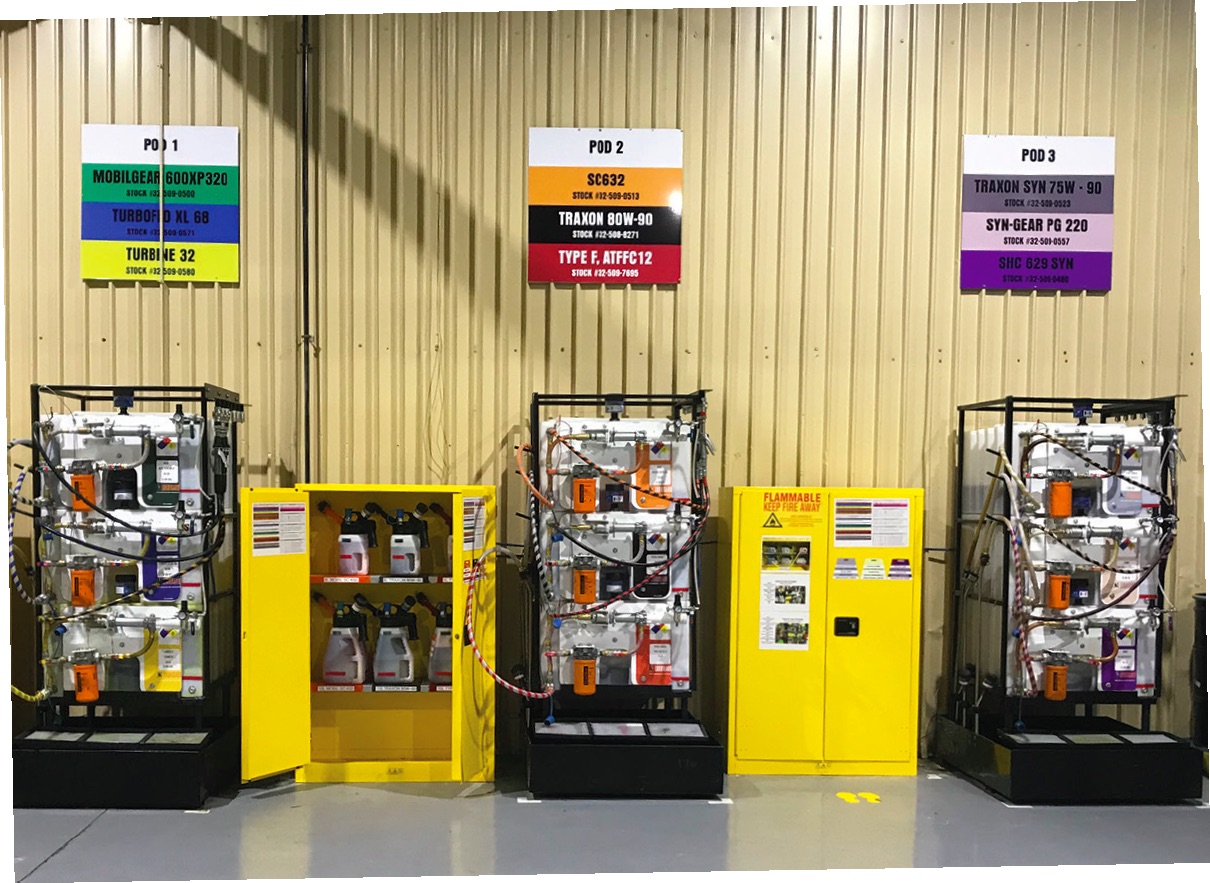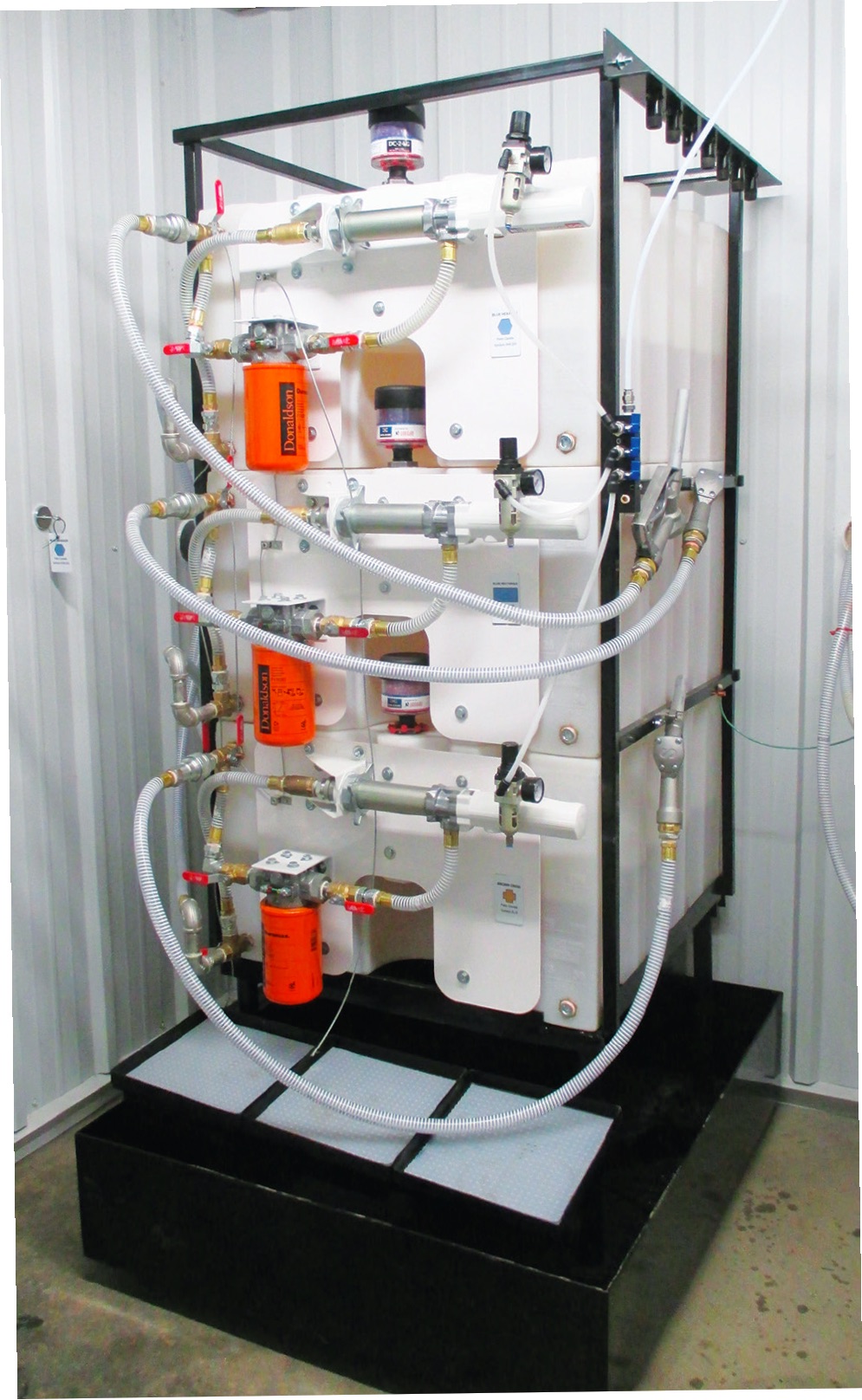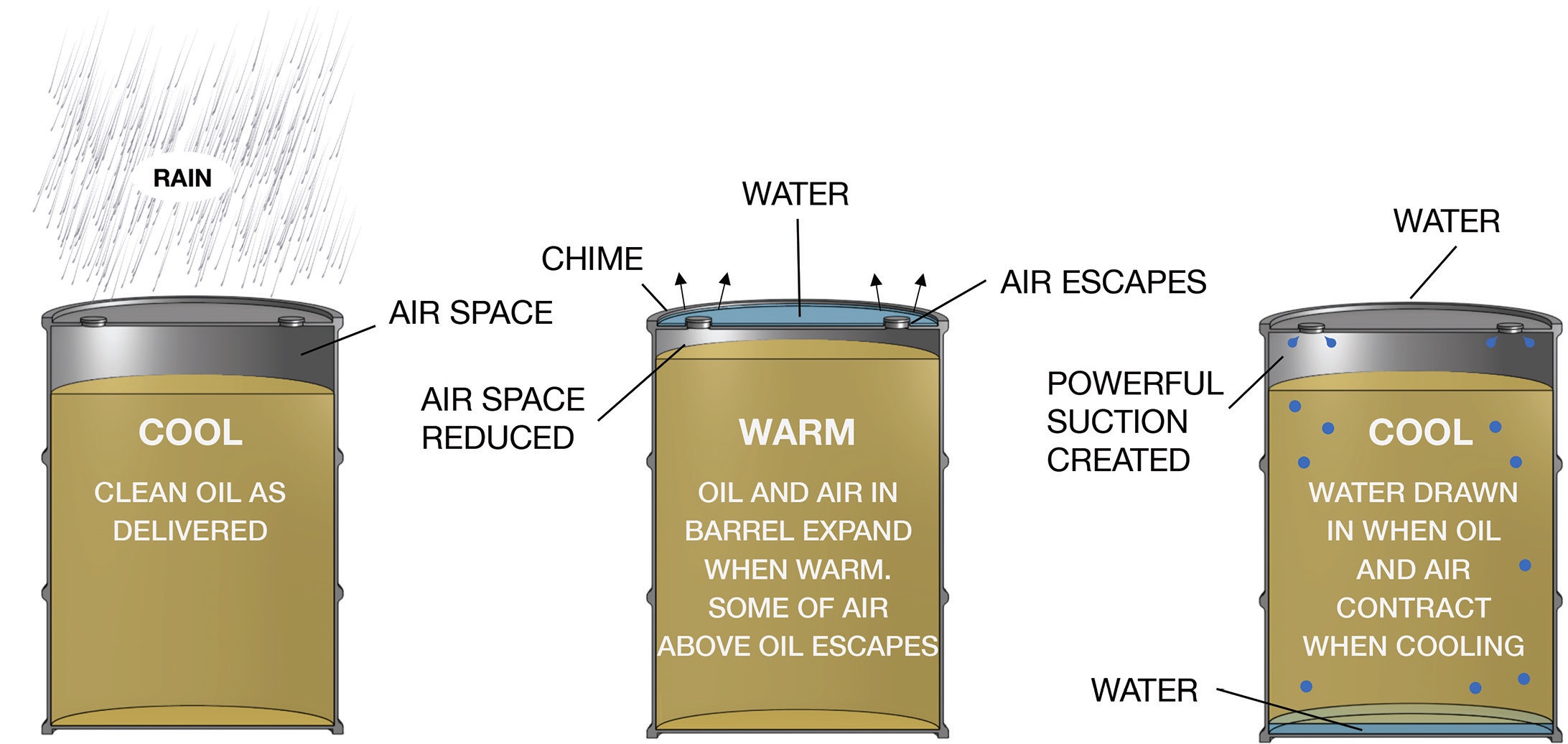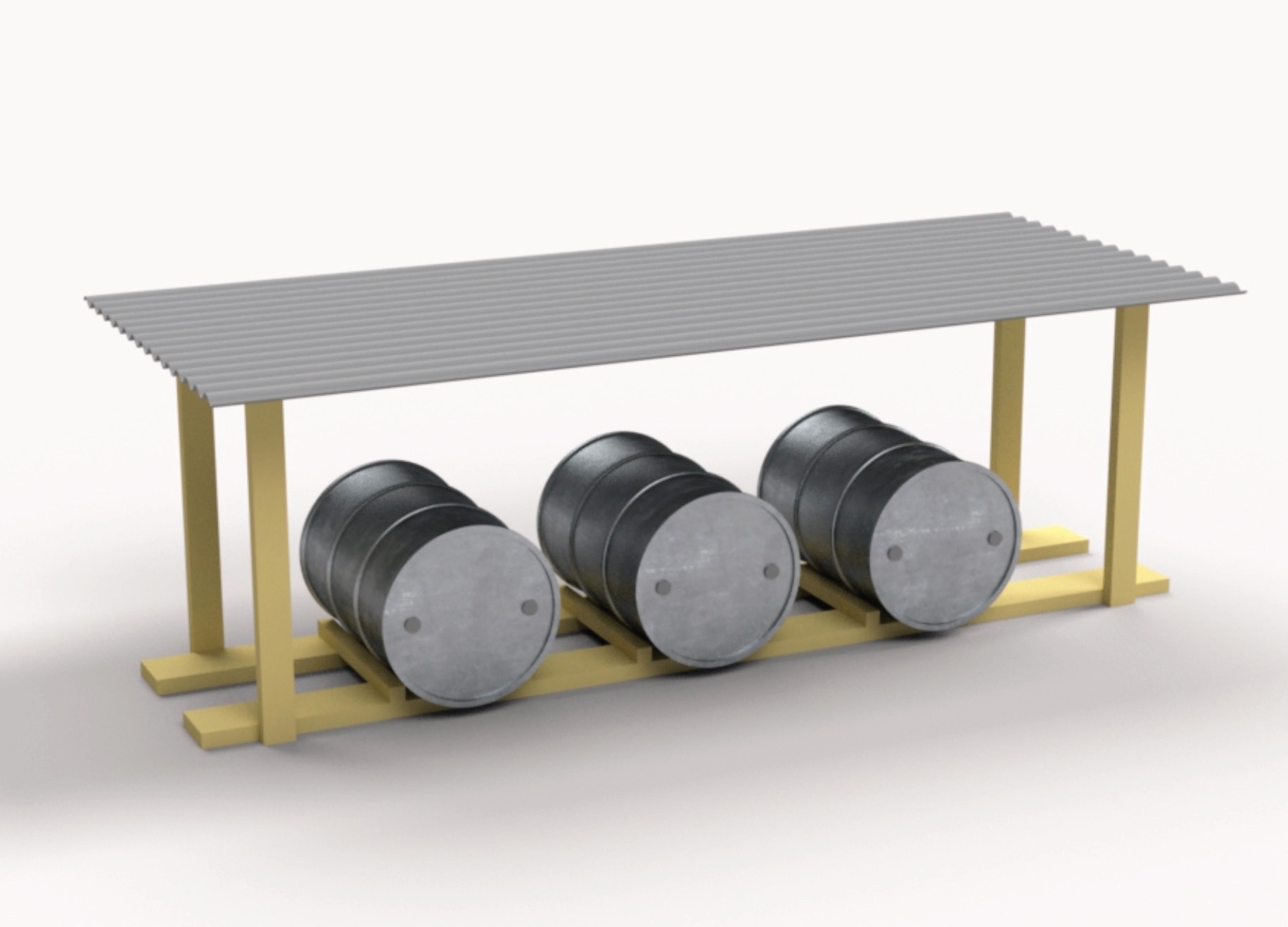Meet the Presenter
This article is based on a Webinar presented by STLE Education on Oct. 14, 2020. Basic Storage & Handling of Lubricants & Greases is available at www.stle.org: $39 to STLE members, $59 for all others.
Manuel A. Garcia is a senior technical services advisor for Petro-Canada Lubricants LLC (a HollyFrontier Company) covering Southeast U.S. and Puerto Rico. Garcia received his bachelor of science degree in mechanical engineering from Purdue University. He is both an SME Certified Manufacturing Technologist (CMfgT) and STLE Certified Lubrication Specialist (CLS). Garcia has 29 years of experience working in the lubricants industry across the U.S., Caribbean and Central America, focusing on industrial, commercial and food-grade lubricants.
You can reach Garcia at manuel.garcia@hollyfrontier.com.

Manuel A. Garcia
KEY CONCEPTS
•
Effective methods, practices and tools ensure efficient lubricant management.
•
Proper storage and handling have economic and operating benefits.
•
Shelf life depends on chemical composition and storage conditions.
Proper storage and handling of lubricants is an essential organizational task that is often unknowingly underestimated by service and maintenance personnel. Whether making gadgets, producing steel or manufacturing food items—companies become proficient in their top-line objectives, yet often overlook the importance of a progressive lubrication program (
see Figure 1). Establishing storage and handling processes is one of the key elements of this program, which, if implemented well, will result in economic and operating benefits as they help prevent damages, errors and occurrences of unnecessary costs while ultimately ensuring equipment reliability and uptime. STLE member Manuel A. Garcia, senior technical services advisor for Petro-Canada Lubricants LLC, says, “We can add value to any business by assisting with good storage and handling practices.”
 Figure 1. Elements of a progressive lubrication program. Figure courtesy of Petro-Canada Lubricants.
Figure 1. Elements of a progressive lubrication program. Figure courtesy of Petro-Canada Lubricants.
This article is based on an STLE Education Webinar presented Oct. 14, 2020, by Manuel A. Garcia. See
Meet the Presenter for details.
Good storage and handling practices begin with safeguarding product packaging identification and labeling, which is not only important for plant personnel health and safety, but also is necessary to prevent environmental pollution. Other key elements of good storage and handling practices include:
•
Establishing proper handling and storage of lubricants when containers are being delivered and received on premises
•
Separation of new products from used oil containers
•
Utilization of separate pumps, hoses and transfer containers by product family
•
First-in and first-out (FIFO) product rotation
•
Immediate disposal of lubricants that have exceeded their shelf life
•
Establishing a color-coding system and product identification symbols
•
Contamination avoidance and prevention.
Furthermore, practicing proper lubricants storage and handling techniques has economic and operating benefits. Economic benefits are associated with the prevention of waste due to:
•
Leakage or spills from damaged containers
•
Contamination due to exposure to dust, metal particles, fumes, moisture, etc.
•
Degradation due to prolonged storage
•
Product residual in containers at the time of disposal or return
•
Mixing of different brands or types of lubricants that are incompatible
•
Leakage, spills and drips when charging a reservoir or lubricating a machine.
Operating benefits are associated with improved uptime due to:
•
Reduced downtime and cost of repairs
•
Reduced material handling time and labor
•
Systematic housekeeping.
Handling methods of 55-gallon drums
Following safety protocols and procedures while handling lubricating oils and greases is extremely important as negligent management can result in hazardous circumstances. Most packaged lubricants are sold in 55-gallon drums worldwide, and their drum weight can reach well over 400 pounds. These drums must be moved with caution and assistance of special equipment.
Most often, forklift trucks are used to transport drums in large quantities or over long distances. There are a variety of attachments available to handle 55-gallon drums by forklifts. For example, drum grabbers and clamp attachments enable operators to move single or multiple drums quickly and safely. In addition to having forklifts, some large facilities might install systems such as portable stackers, chain hoists, trolley on I-beam bridge, etc., which are optimal for handling larger number of drums efficiently.
When forklifts are not available to assist with unloading drums, truck unloading is convenient with truck ramps or manual portable elevators (manually propelled elevated platforms). Hand pallet trucks, manual barrel trucks and triangular dollies can be used to haul drums manually from an unloading area to storage. A drum rolling method can be an alternative option. However, it is important to use a two-man buddy system for the safety of workers.
Contamination
Improper handling might lead to lubricant contamination, which affects the life and performance of products resulting in equipment failures. It is important to prevent contamination and safeguard cleanliness. Garcia says, “The single greatest opportunity for increasing component life and lowering operating costs is to effectively manage fluid cleanliness.” Typically, contamination is external (foreign particles, other substances) or due to mixing oils of different viscosities. Any contamination might cause wear of critical parts and increase the oxidation of the lubricants, which ultimately reduces their life and can severely damage equipment.
Containers storage and handling
Basic storage and handling techniques have to be met in order to implement a world-class lubricants program. Garcia says, “It does not matter how great our predictive and preventive maintenance practices are in any plant if we can’t assure the right clean oil at the right time and in the right amount in the machines.” As previously stated, a lubricants program should begin with receiving products in a proper manner ensuring cleanliness and a contamination-free environment. All lubricant containers must be properly marked and color/symbol coded to reduce any risks of misapplication.
In Figure 2, a state-of-the-art oil storage department is shown that uses a color-coded program with matching lube tags on the transfer containers, locked cabinets and a temperature-controlled environment with sealed floors. Excellent housekeeping practices can be observed, too, which lead to a top-tier maintenance program. In Figure 3, a mini-bulk oil system with filtration of the oil in and out of the storage containers is shown, along with proper fluid identification and built-on spill containment for employees’ safety. Desiccant breathers are shown, which effectively remove head-space moisture and clean the air of any potential airborne particles.
 Figure 2. A state-of-the-art oil storage department. Figure courtesy of Lubrigard Ltd.
Figure 2. A state-of-the-art oil storage department. Figure courtesy of Lubrigard Ltd.

Figure 3. A mini-bulk oil system with filtration of the oil in and out of the storage containers. Figure courtesy of Lubrigard Ltd.
Containers that must be stored outdoors need to be labeled with appropriate labels that can withstand environmental conditions. Below are common guidelines to ensure error-free processes:
•
Properly labeled oil dispensers with the correct lubricant and color-coded lids
•
Symbol(s) coded
•
Lube tags on oil-fill reservoirs of equipment.
Outdoor lubricants storage
Garcia says, “Drums stored upright and outdoors with standing moisture will breathe—hence, the drums will let air out of the head space area when they warm up during the day, and will entrain air and moisture during the cooling process at night (
see Figure 4).” If the lubricants are stored outdoors, it is preferred to have drums sheltered and placed in a horizontal position so the drum bungs would be at nine and three o’clock parallel to the ground (
see Figure 5). “This prevents moisture from getting into the oil as these drums will breathe with change in temperature,” Garcia says.

Figure 4. Moisture breathing in an upright drum. Figure courtesy of Petro-Canada Lubricants.

Figure 5. Drum bungs at nine and three o’clock positions parallel to the ground. Figure courtesy of Petro-Canada Lubricants.
There are a few common rules when storing 55-gallon drums outdoors:
•
Store containers clear off the ground.
•
Cover drum storage facility.
•
Horizontally place the drum bungs at nine and three o’clock positions.
•
Ensure appropriate labeling as labels do not weather well.
•
Drum lid covers should be used when drums unsheltered.
There are a few common rules when storing bulk containers:
•
They must be properly marked for easy identification.
•
Individual pumps and hoses must be segregated by product family.
•
Desiccant breathers should be used.
•
Fluid containment might be required.
Properly identified dispensing tools can prevent a contamination ingress. There are varieties of dispensing tools available to use in order to transfer products from pails, drums, bulk, etc. Some of these tools are drum faucets, rocker-type drum rack, hand-operated drum pump or pneumatic (air operated pump), lever operated bucket pail pump, metal containers, pistol oilers, filter pumping units, filtration carts, etc.
Degradation of lubricants during storage
Lubricants storage area should be organized in a safe and controlled manner that fulfills local health/safety regulations and requirements. Long-term storage at moderate temperatures and humidity, and in other proper storage conditions as instructed by a lubricant producer, has a minimal effect on quality of the product. An approximate guide outlining the maximum typically recommended storage times for products that might degradate is shown in Table 1. However, it is important to consult with the producer of the specific product for the most precise storage guidelines.
 Table 1. Degradation of lubricants during storage. Table courtesy of Petro-Canada Lubricants.
Table 1. Degradation of lubricants during storage. Table courtesy of Petro-Canada Lubricants.
All lubricants have a manufacturer suggested shelf life listed on the label, which is typically based on the chemical composition of the product and the additives used to make it. For example, heavy additized automotive oils (such as motor, transmission, etc.) might have a shelf life of around five years. Conversely, some products such as cutting oils might have a shelf life of around one year for water soluble compositions and three years for a neat product. Soft greases such as NLGI Grade 0 and softer might be shelved for around one to two years, whereas NLGI Grade 1 and stiffer for around three years. Other examples are base oils, lightly additized oils and industrial oils (such as hydraulic, vacuum pump oils, etc.), which can be shelved for approximately three years.
As previously outlined, it is essential to establish FIFO rotation to prevent expiration. Optimally, products should always be stored according to the manufacturer’s shelf life recommendation. In addition, there are general guidelines that could be followed in order to achieve a good storage and handling program:
•
Discard all inventory products that are expired and any product not being used or “not identifiable.”
•
Create wall labels for drum storage/color coding by product category.
•
Create a used oil (properly marked) disposal containment with an easy access to pick-up removal by a recycler.
•
Proper lighting in the lubricant storage area and a temperature-controlled environment is desired.
•
Use color-coded and dedicated transfer pumps for each lubricant.
•
Purchase color-coded transfer containers to match pumps and equipment tags.
•
Ensure continuous personnel training.
Ensuring proper storage and handling of lubricants is an essential task of every site, but in order for it to be well-executed, leadership within an organization has to take ownership of it.
Dr. Yulia Sosa is a freelance writer based in Peachtree City, Ga. You can contact her at dr.yulia.sosa@gmail.com.